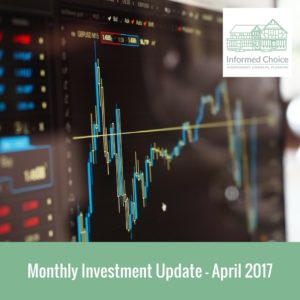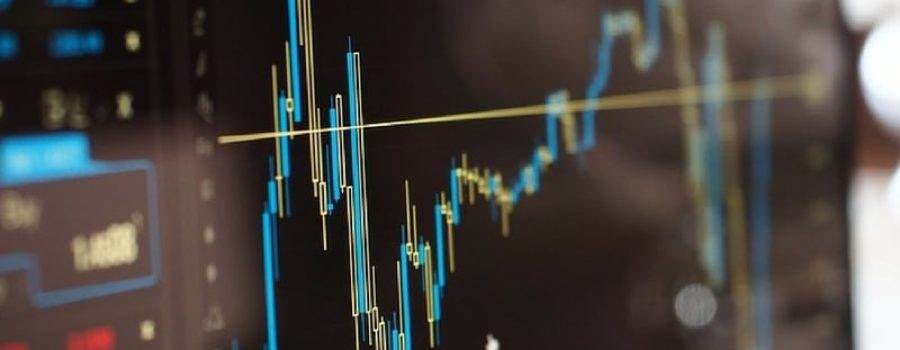 In our latest monthly investment update for April 2017, we look at how the investment markets, global economy and commodity prices are performing.
In our latest monthly investment update for April 2017, we look at how the investment markets, global economy and commodity prices are performing.
The FTSE 100 index of leading UK company shares finished March at 7,322.92, rising by 59.48 points or 0.82% during the month.
Markets largely ignored the official Article 50 notification that the United Kingdom is leaving the European Union, suggesting this stage of the Brexit process was already priced into market valuations.
Despite modest monthly performance, global equities delivered a strong quarterly performance. In the US, the S&P 500 Index was flat over the month but advanced for a sixth consecutive quarter, rising by 5.5%. The Nasdaq Composite, which represents technology stocks, returned nearly 10% over the past quarter, marking its best quarterly performance since the end of 2013.
Business sentiment in Japan is improving, according to the latest Tankan survey from the Japanese central bank. The index rose to +12 from +11, representing its highest level since December 2015. This is a closely watched economic indicator which reports on sentiment amongst big manufacturers in Japan.
The performance of the UK manufacturing sector appeared solid at the end of the first quarter, according to the latest Markit/CIPS UK Manufacturing Purchasing Managers’ Index.
Rates of expansion in output and new orders lost further impetus following recent highs, but remained above their respective long-run averages. The domestic market performed well, with the boost to export competitiveness from the weak Sterling exchange rate contributing to new work inflows.
The seasonally adjusted Markit/CIPS PMI slipped to a four-month low of 54.2 in March, down from 54.5 in February. It did however remain above the neutral level of 50 for an eighth successive month.
British households are running down their savings, which fell to a record low at the end of 2016. The savings ratio, which estimates how much money households save as a percentage of total disposable income, fell to 3.3% in the final quarter of last year, from 5.3% in the previous three months.
This represents the lowest savings ratio since records began in 1963, according to the Office for National Statistics. It has raised concerns of a consumer debt crisis, which greater reliance on credit cards.
Price inflation across the Eurozone slowed in March, easing pressure on the European Central Bank to slow their policy of monetary stimulus. The initial estimate from Eurostat shows inflation slowing to 1.5% in the year to March, down from 2% in February. This fall in inflation was partly due to lower oil prices and also slowing increases in the cost of food.
In the UK, price inflation reported in March rose to its highest level since September 2013. The Consumer Prices Index (CPI) measure of price inflation rose to 2.3% for the year to February, up from 1.8% in January. The Bank of England is forecasting that inflation will peak at 2.8% in 2018.
The Retail Prices Index (RPI) measure of inflation, which includes some housing costs, rose to 3.2% in February from 2.6% in January.
Average house prices in the UK fell by 0.3% in March, according to the latest Nationwide survey. This is the first monthly house price fall reported since June 2015 and the largest such fall in almost five years.
Average house prices rose by 3.5% in March compared to a year earlier, compared with annual rate of 4.5% in February. The average price of a house in the UK now stands at £207,308, according to Nationwide.
Oil futures rose at the start of April, with upbeat economic sentiment in Asia and Europe outweighing concerns about a higher US rig count contributing towards global oversupply. International benchmark Brent futures were $53.56 a barrel in early trade.
Brent and US crude posted their worst quarterly loss in March since the end of 2015, with US futures falling by nearly 6% in the quarter. Inventory levels continue to outpace production cuts from OPEC and non-OPEC members, leading to the price falls.
The benchmark 10 year UK Gilt yield stands at 1.132% at the start of April, falling slightly during March.
£1 buys $1.25220 or €1.17540. The Forex Gold Index is $1,244.85/oz and the Silver Index is $18.06/oz.

